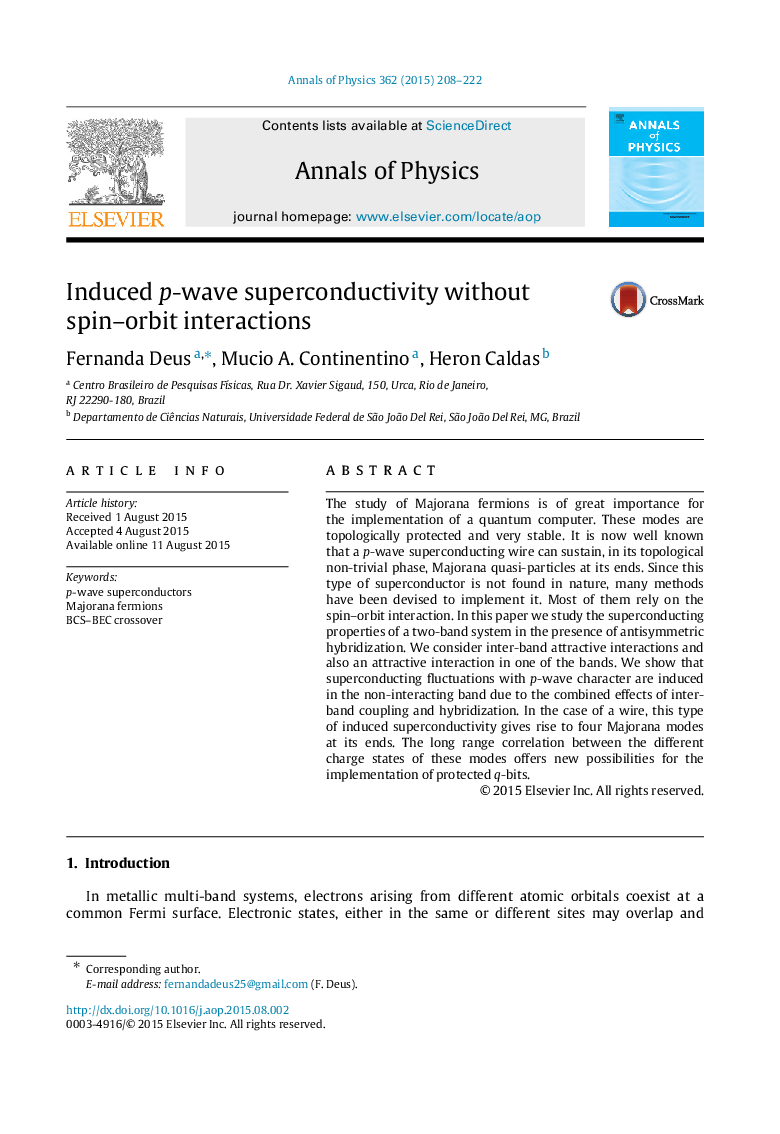| Article ID | Journal | Published Year | Pages | File Type |
|---|---|---|---|---|
| 1855976 | Annals of Physics | 2015 | 15 Pages |
The study of Majorana fermions is of great importance for the implementation of a quantum computer. These modes are topologically protected and very stable. It is now well known that a pp-wave superconducting wire can sustain, in its topological non-trivial phase, Majorana quasi-particles at its ends. Since this type of superconductor is not found in nature, many methods have been devised to implement it. Most of them rely on the spin–orbit interaction. In this paper we study the superconducting properties of a two-band system in the presence of antisymmetric hybridization. We consider inter-band attractive interactions and also an attractive interaction in one of the bands. We show that superconducting fluctuations with pp-wave character are induced in the non-interacting band due to the combined effects of inter-band coupling and hybridization. In the case of a wire, this type of induced superconductivity gives rise to four Majorana modes at its ends. The long range correlation between the different charge states of these modes offers new possibilities for the implementation of protected qq-bits.
